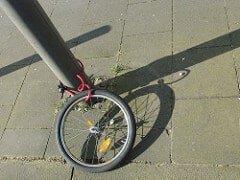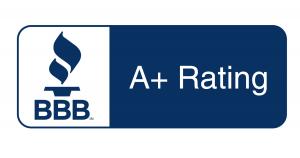Pittsburgh Larceny Attorneys

The FBI defines “larceny-theft” as the unlawful carrying, taking, riding or leading away the property of another person. For instance, riding away on a bicycle that you know belongs to someone else would qualify as larceny. Shoplifting and pick-pocketing also are forms of larceny.
To prove a charge of larceny, prosecutors typically must show that a defendant performed each of the following actions:
- Unlawfully took property.
- Took property that belonged to someone else.
- Took the item or items without the owner’s consent.
- Intended to permanently take the property.
Larceny in Pennsylvania
Pennsylvania law stipulates that it’s a crime to commit theft of someone else’s property. The state uses the term “theft” rather than “larceny” to refer to the unlawful taking of property. In addition to illegally taking another person’s property, theft also can include accepting or receiving stolen property that a defendant knows was stolen.
The state categorizes as theft several methods of taking property:
- Intentionally withholding someone’s property by deception.
- Stealing services.
- Obtaining or withholding property by threatening to harm someone or to commit another criminal act.
- Keeping property that someone else has lost without attempting to return it to the owner.
Types of Larceny
“Grand” and “petty” larceny are determined by the types and value of property stolen. States define the elements that separate petty larceny from grand larceny.
Grand Larceny
Grand theft — or larceny — is considered the equivalent of first-degree theft. In many states, theft is categorized as grand theft under the following circumstances:
- The value of the stolen property meets a certain dollar threshold.
- The stolen property is taken directly from an individual but without the use of fear or force. Taking someone’s property through the use of force or fear is classified as robbery.
- Certain types of property are stolen. For instance, taking a car or some types of animals often qualify as grand theft regardless of the dollar value of the items.
Petty Larceny
Petty theft or larceny is considered to be second-degree theft and applies to items that are less valuable or that don’t fall into specific categories such as automobiles.
Theft is a third-degree felony in Pennsylvania if:
- The amount involved is more than $2,000, or;
- If the stolen property is a motorcycle, airplane, automobile, motorboat or another vehicle that is motor-propelled, or;
- If the theft charge relates to receiving stolen property and the receiver participates in the business of selling or buying stolen property.
Theft is a second-degree felony if:
- It is committed during a disaster that is man made, natural or caused by war and relates to laws covering unlawful taking or disposition of property, receiving stolen property, using vehicles without authorization, or retail theft.
- A firearm is the stolen property.
- Anhydrous ammonia is the stolen property.
- The stolen property is valued above $100,000 but not more than $500,000.
Theft is a first-degree felony if:
- In a case of receiving stolen property, the property is a firearm and the receiver is in the business of dealing in stolen property, or;
- The value of the stolen item or items is in excess of $500,000.
Any theft that does not fall within the three felony categories is classified as a first-degree misdemeanor, except:
- If the value was between $50 and $200, the offense is a second-degree misdemeanor.
- If the value was less than $50, the offense is a third-degree misdemeanor.
Penalties for Larceny
In Pennsylvania, possible penalties for theft can vary significantly according to the value of the items stolen, the types of items and other details pertaining to the case.
- Theft of an item valued at less than $50 is considered a “summary offense,” which is less serious than either a felony or a misdemeanor. A summary offense can result in a sentence of up to 90 days in jail or a fine of $25 to $1,500, or both.
- For other categories of theft, penalties can range from 90 days to seven years of incarceration.
Annual Larceny Theft Statistics in Pittsburgh
Larceny-theft in Pittsburgh remained relatively constant from 2010-2016, but dropped significantly in 2017. From 2016 to 2017, the number of larceny-theft offenses decreased by nearly 21% to 5744 total offenses. Prior to that, there was an average of 7230 offenses per year. The three areas which experience the most larceny-thefts are Golden Triangle, South Side Flats, and Shadyside, which since 2010 have experienced 5225, 2980, and 3024 thefts respectively. Since 2010, thefts in Golden Triangle and South Side Flats have remained fairly constant, but both areas experienced a lower year for offenses in 2017. Shadyside, however, has been gradually decreasing since 2010. Between 2010-2017, larceny-thefts in Shadyside have decreased by nearly 46%.
The vast majority of larceny-thefts occur in the afternoon (11 AM to 5 PM) and evening (5 PM to 11 PM) and are distributed fairly evenly throughout the week. Both of these times account for 32% of total violations, a combined total of 64%.
Defending Against a Larceny Charge
For an individual charged with larceny, a criminal defense attorney may employ one of a number of defense strategies, including arguing that:
- The defendant did not intend to permanently take the property.
- The defendant intended to find the rightful owner and return missing property.
- The defendant acted under duress.
- The property was lost rather than stolen.
- The defendant was a victim of entrapment.
- The owner of the property provided consent for taking the property.
In larceny cases, the question often arises whether an alleged crime consisted of one larceny or several. In general, multiple items that are stolen from one owner at the same time will qualify as one case of larceny.
However, courts may look at locations, timing and other issues to determine whether a larceny case involved one or multiple instances of the crime. A court’s determination regarding the number of instances of larceny can affect the number and severity of charges, along with the potential penalties.
Consult with an Experienced Larceny Attorney
Larceny is a serious criminal charge, and you should not take it lightly. A conviction can result in significant penalties, including jail time. To schedule a free initial consultation with an experienced criminal defense attorney, contact DeLuca, Ricciuti & Konieczka.









